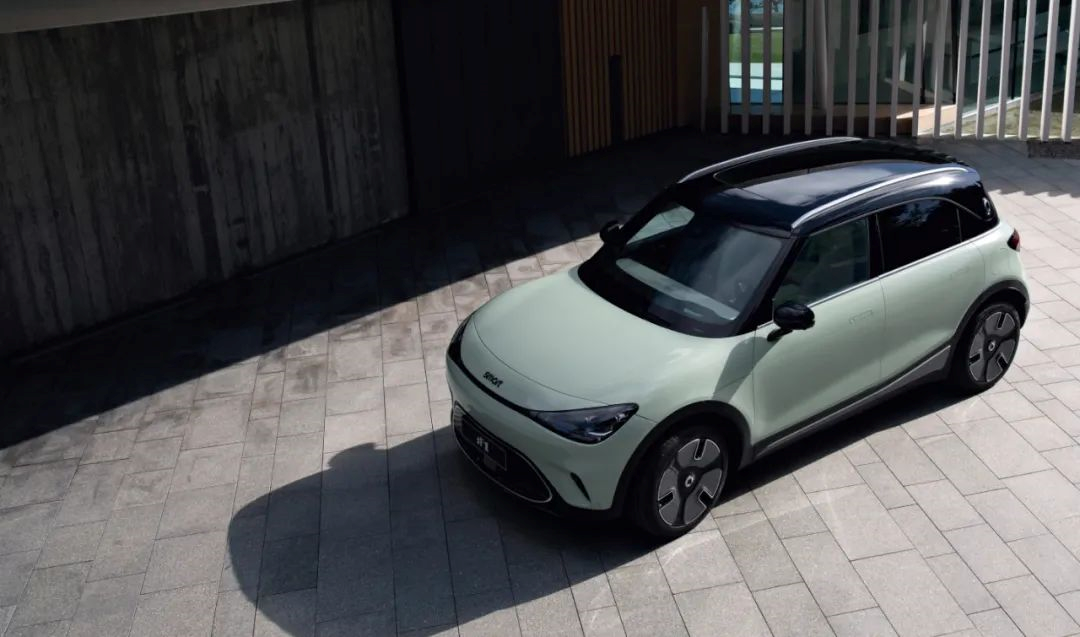Wanbo from Vice Driving Temple
Smart brand, the parent-child brand of Mercedes-Benz and Geely, has launched its first transformation work, the Mercedes-Benz Smart Elf #1, in China.
The cockpit is equipped with a Qualcomm 8155 chip and can centrally control the entertainment system. The smart Pilot intelligent driving system is equipped, officially calibrated as L2+, and can realize 23 auxiliary driving functions.
Electrically, it is equipped with a permanent magnet synchronous motor with a maximum power of 200 kW and a peak torque of 343 Nm, with a 0-100 km/h acceleration time of 6.7 seconds.
The 66 kWh ternary lithium battery pack has a maximum range of 560 kilometers and supports 150 kW fast charging, with a charging time of less than half an hour from 10% to 80%.
Finally, and perhaps most importantly, the starting price is RMB 190,000.
What kind of car is Mercedes-Benz Smart Elf #1?
Intelligent or not?
Starting with the bottom-layer hardware of the cockpit, the Mercedes-Benz Smart Elf #1 is equipped with a Qualcomm 8155 cockpit chip, 7nm process, and an 8-core CPU processor with a computational power of 8TOPS.
At the human-machine interaction level, it is mainly realized through a 12.8-inch independent touch screen, with 12G of memory and 128G of storage space, which can control the vehicle control and entertainment system through this large screen.
In addition, there is a 9.2-inch full LCD instrument panel in front of the steering wheel, which can display driving information such as speed, range, and auxiliary driving signs.
The car is equipped with the “Inspiration Planet” Smart OS full-scene digital ecological car system, as well as a growing voice assistant Avatar, which has the ability to quickly learn and adapt to users’ voice habits.
In addition, Mercedes-Benz Smart Elf #1 also has the ability to link with the mobile APP, and the owner can customize the vehicle through the APP, including lighting, scenes, etc.
At the intelligent driving level, the Mercedes-Benz Smart Elf #1 is equipped with the smart Pilot intelligent auxiliary driving system, and there is currently no specific information about the bottom-layer hardware and solution.
Sensor Setup : The Mercedes-Benz Smart EQ ForTwo #1 has a total of 23 sensing hardware, including 12 ultrasonic radars, 5 millimetre-wave radars, 4 surround-view cameras, 1 front-facing digital camera and a cabin camera.
Judging from the sensor setup and architecture of the Jingling Star #1 platform, the intelligent driving solution and underlying hardware of the Mercedes-Benz Smart EQ ForTwo #1 may likely come from Mobileye.
In terms of functions, the smart Pilot is officially calibrated to achieve Level 2+ Intelligent Driving, with 23 intelligent driving functions including ACC adaptive cruise control in the full-speed range, ALCA automatic lane-change assistance, APA automatic parking assistance, and lever-lane change.
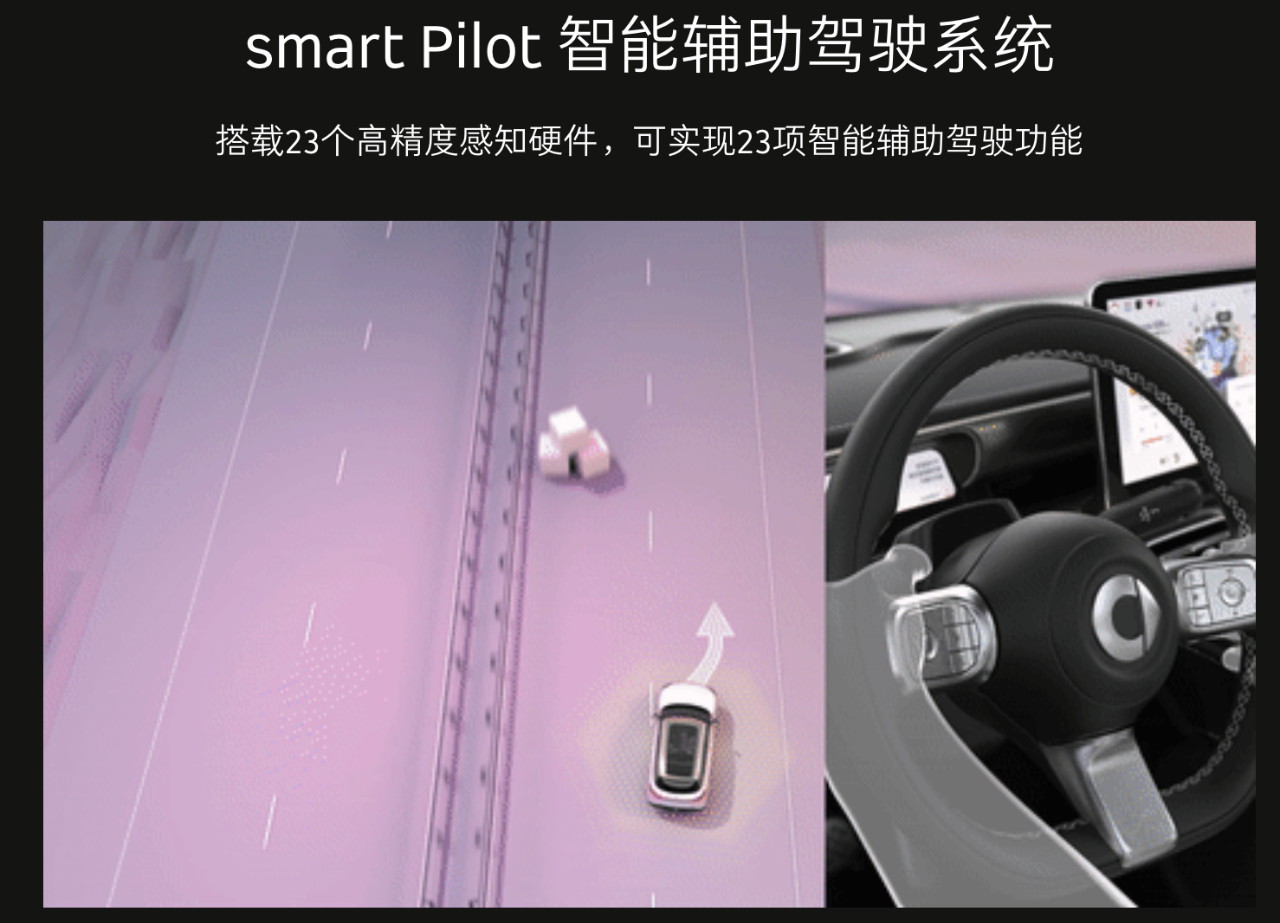
How is the Smart EQ ForTwo #1 Three-Electronics System?
In terms of three-electronics, the Smart EQ ForTwo #1 series adopts a rear-mounted rear-wheel-drive permanent-magnet synchronous motor layout, with a maximum output power of 200kW, peak torque of 343N·m, and 0-100 km/h acceleration in 6.7 seconds.
The top-of-the-line Premium engine uses a Sic permanent magnet synchronous motor, which has more advantages in terms of energy consumption.
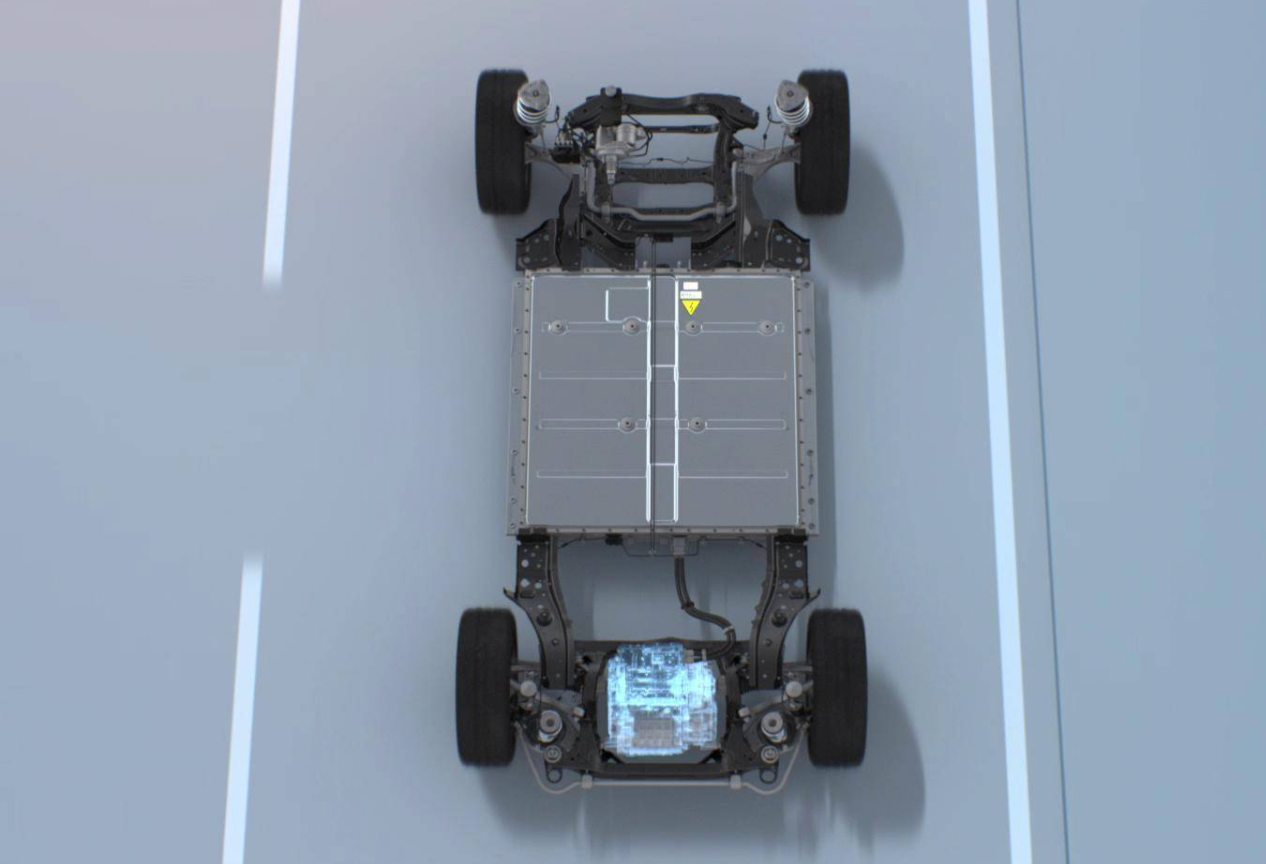
The power battery uses a 66kWh ternary lithium battery pack, and the Smart EQ ForTwo #1 Pro+ and Premium have a range of 535 km and 560 km, respectively.
In terms of charging, the slow charging power is 7.2kW, and the charging time from 10% to 80% takes 7.5 hours. It also supports 150kW fast charging, and it takes less than half an hour to charge from 10% to 80%.
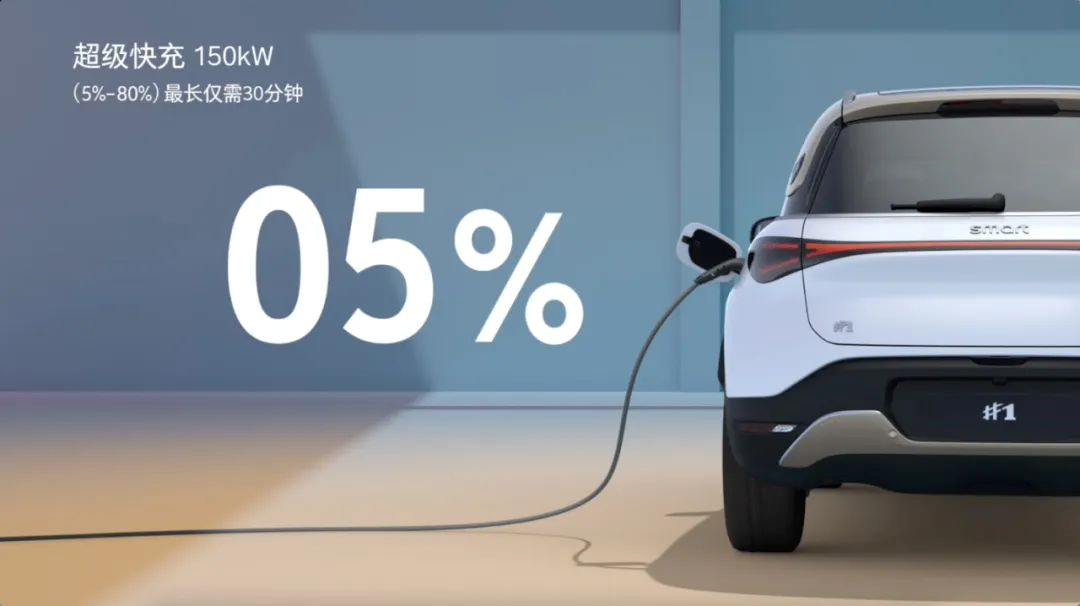
In addition, the Mercedes-Benz Smart EQ ForTwo #1 also supports 3.3kW reverse charging, which can supply power to outdoor equipment.
Is this the Largest Smart Car Ever?
This year’s electric Smart breaks the mini car image of the brand.
The vehicle dimensions are 4270mm in length, 1822mm in width, 1636mm in height, and a wheelbase of 2750mm. It is positioned as a compact SUV, and both the appearance size and cabin space can be considered as the largest Smart car ever.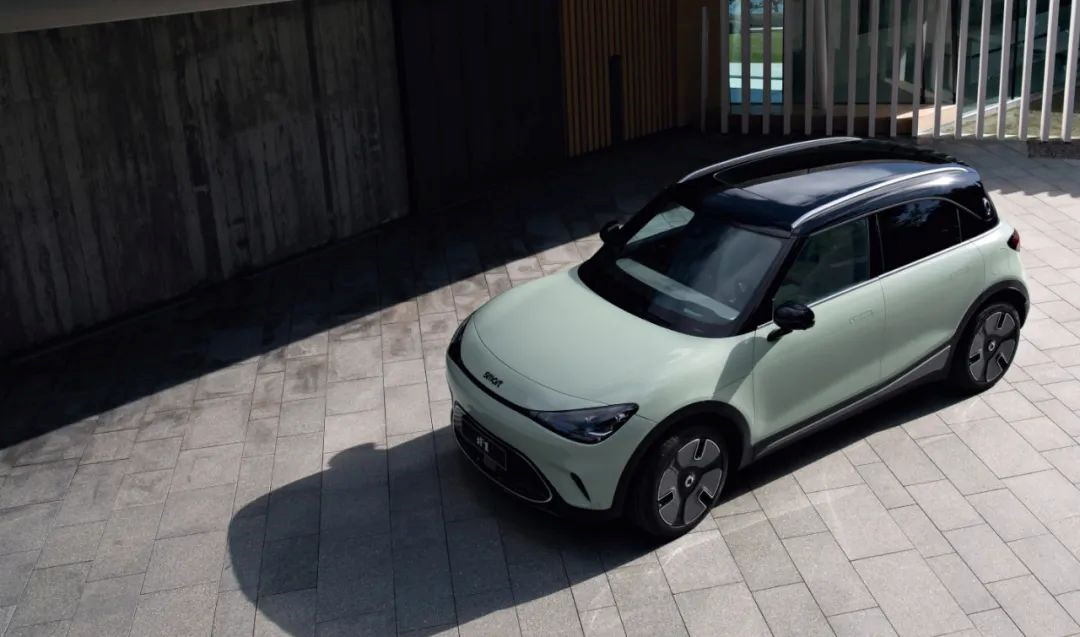
In terms of appearance design, the Mercedes-Benz Smart elf #1 has basically overturned the original design style:
The front of the car body is more rounded and soft, and officially speaking, it should be to take care of the wind resistance and improve the energy efficiency. The official wind resistance coefficient is Cd=0.29.
The exterior details also follow the mainstream electric cars of today, with front and rear through-type headlights, hidden door handles, a front trunk with a capacity of 15 liters, and a semi-closed grille.
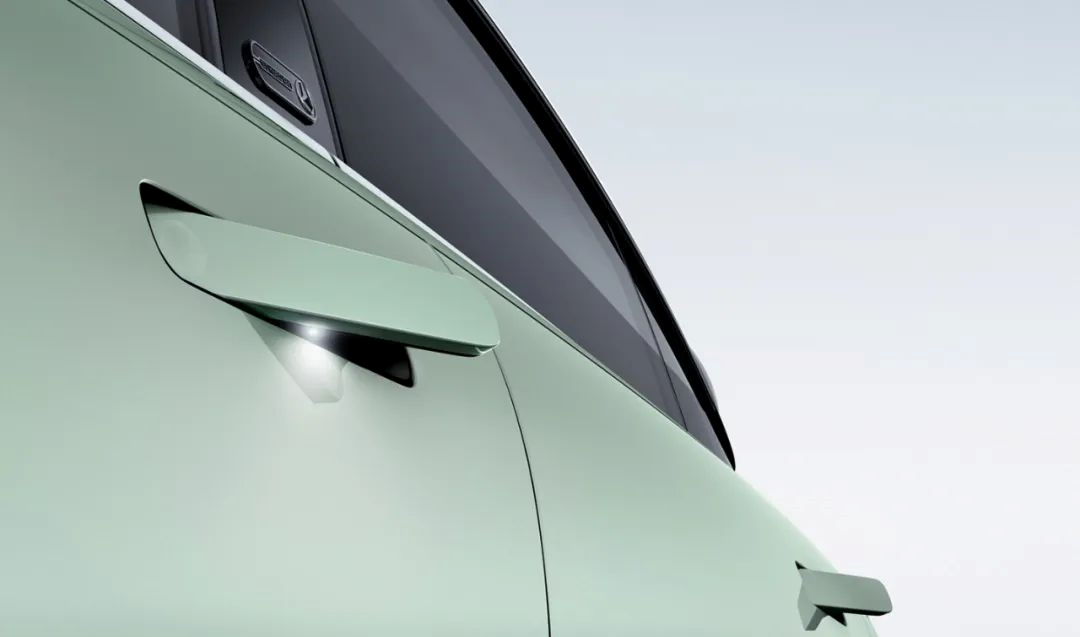
For exterior colors, Smart offers 11 color options, but except for the three colors of Particle White, Silent Black, and Cyber Silver, the other 8 colors require payment to be chosen.
As for the cabin facilities, the front seats support 6-way electric adjustment and 4-way electric lumbar support adjustment. The air conditioning uses a heat pump air conditioner, which can achieve dual-zone automatic constant temperature adjustment, multi-directional adjustment, ventilation, and heated seats.
In addition, the cabin is also equipped with a Beats sound system and an intelligent perfume system.
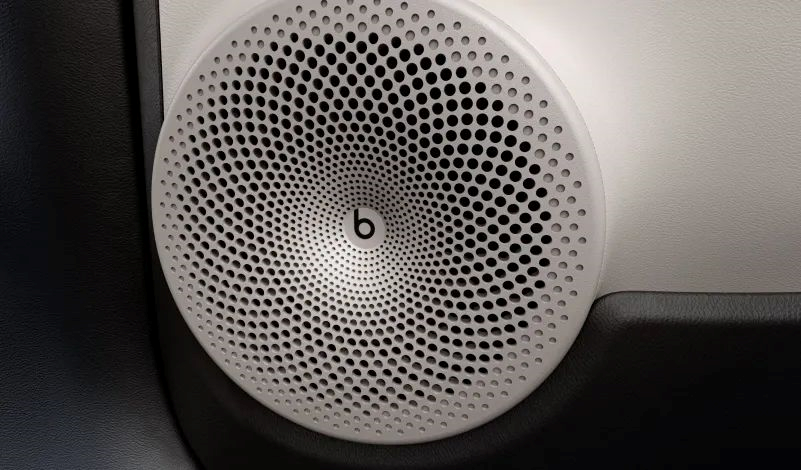
Mercedes-Benz car, Geely’s soul?
Mercedes-Benz is responsible for the exterior design, while as another joint venture car company of Smart, Geely is mainly responsible for vehicle engineering design.
Specifically, the Mercedes-Benz Smart Elf #1 is developed based on Geely’s self-developed SEA Haohan Architecture.
Publicly available information shows that the SEA Haohan Architecture can support the full coverage from A-level cars to E-level cars, and meet the development and design of sedan, SUV, MPV and other car models.
In terms of intelligent driving, SEA Haohan Architecture also has considerable scalability, which can realize all-round coverage from basic intelligent driving assistance to advanced automatic driving.
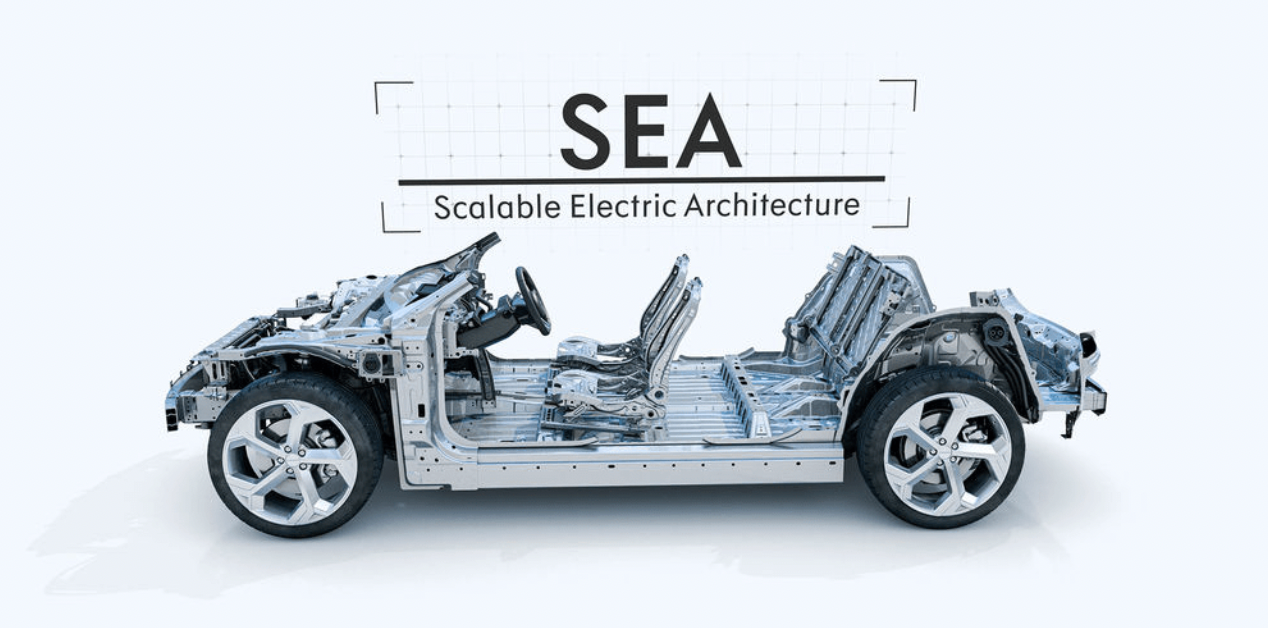
Starting at 190,000 yuan, delivery at the end of the year
Finally, and most importantly, how much is this car selling for?
According to official information, the Mercedes-Benz Smart Elf #1 offers two versions, namely the Smart Elf #1 Pro+ and Smart Elf #1 Premium, with a subsidized price of RMB 190,000 and RMB 230,000, respectively.The pre-order of Mercedes-Benz Smart Fortwo #1 has now begun, with the final delivery time set for December 2022.
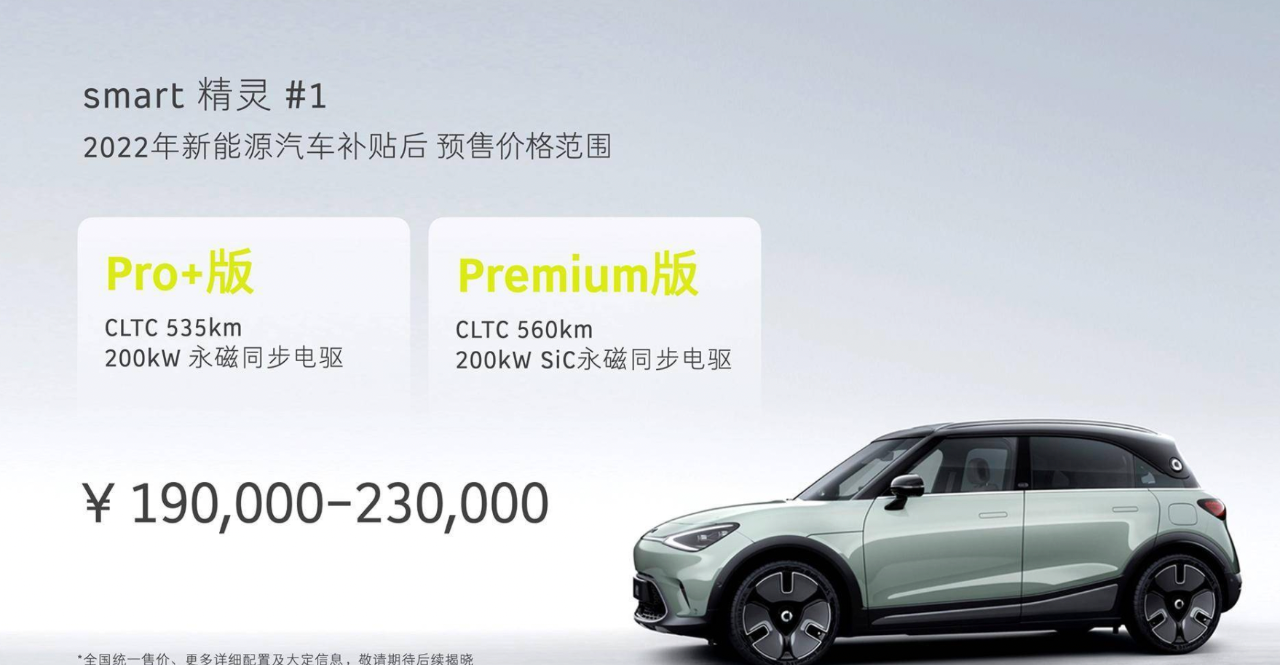
How to evaluate?
Some users say it looks ugly, while others say it’s expensive.

Appearance is a matter of taste, but when it comes to pricing, a comparison is needed to reach a conclusion. Price is quantitative, and in terms of variables, pure electric vehicles can be compared. First is intelligence, followed by electricization, as for driving performance, it remains to be seen after delivery.
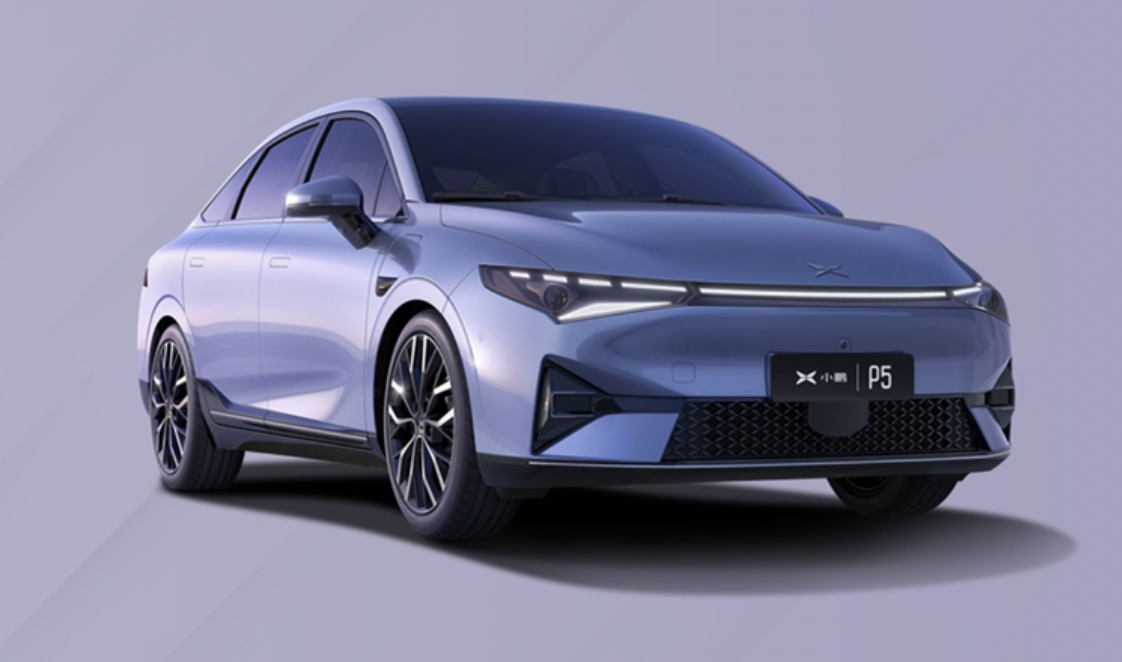
Speaking solely on price, the Mercedes-Benz Smart Fortwo #1 is roughly comparable to mainstream models such as the Xpeng G3i, Volkswagen ID 3, and slightly higher-positioned Xpeng P5 in the market.
In terms of intelligence, both the Xpeng P5 and the Mercedes-Benz Smart Fortwo #1 are equipped with the Qualcomm Snapdragon 8155 chip, which is at the same level in terms of underlying hardware.
The Xpeng G3i, on the other hand, uses the previous generation Snapdragon 820A chip, which performs one generation less. As for the Volkswagen ID 3, there is currently no specific information available.
As for the specific in-car interactive experience, it goes without saying that Xpeng, which stands on the platform of intelligence, holds a clear advantage, and Mercedes-Benz Smart Fortwo #1, which currently only has data on paper, and the Xpeng P5 have a similar level of intelligence.
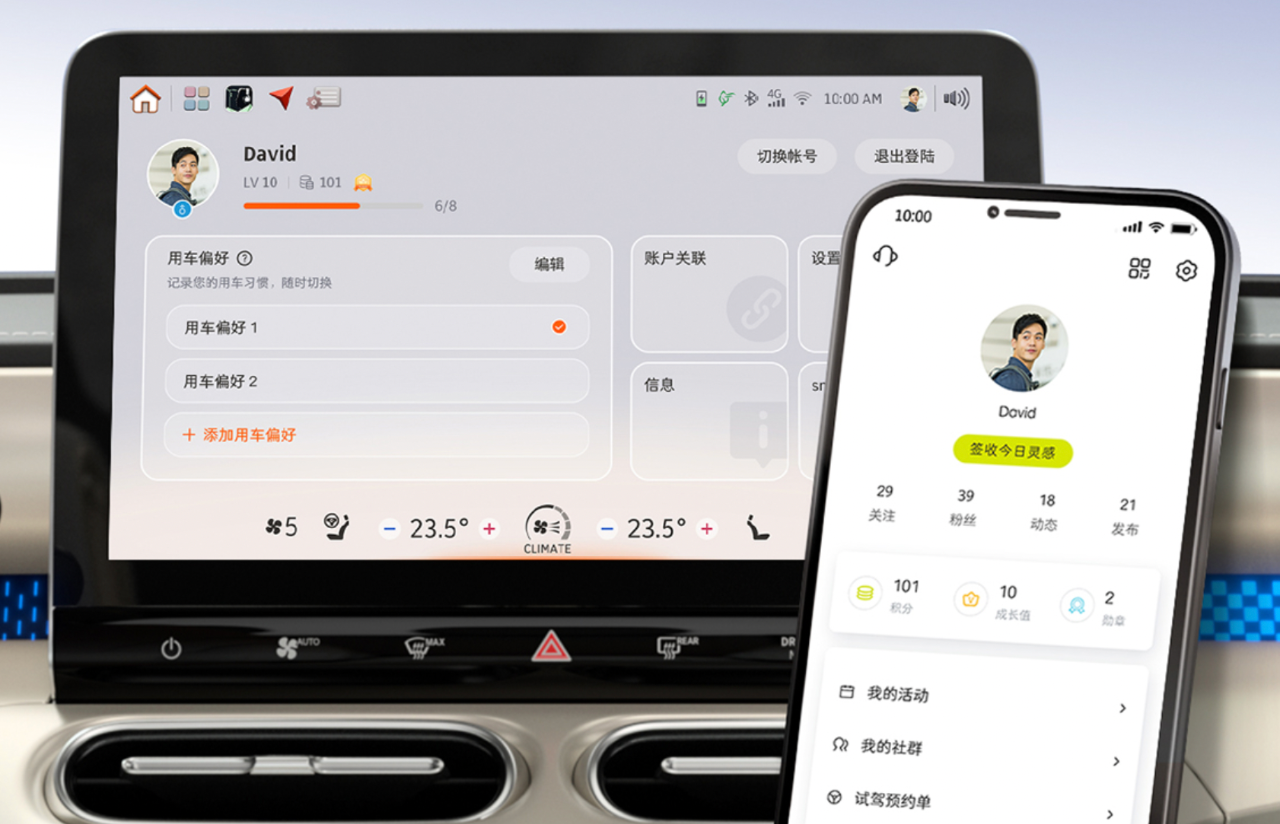
As for the Volkswagen ID 3, it has previously been frequently reported to have had issues with car media player crashes, and therefore is ranked last.
So in terms of intelligent cockpit, Xpeng P5 = Mercedes-Benz Smart Fortwo #1 > Xpeng G3i > Volkswagen ID 3.
In terms of intelligent driving, the underlying chip used in the Mercedes-Benz Smart Fortwo #1 is still unknown, so it is currently not included in the comparison.
The Xpeng P5 can achieve high-speed NGP function, and its overall capability is one level higher than the other three models, while the other three models all have basic L2-level intelligent driving capabilities.
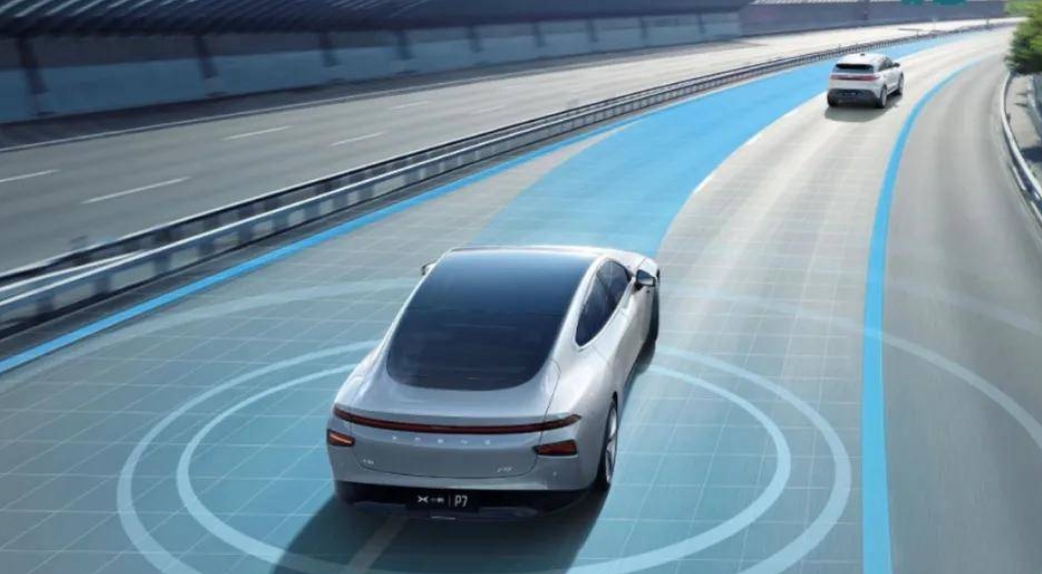
Therefore, in terms of intelligent driving,# XiaoPeng P5 > Benz Smart #1 = XiaoPeng G3i = Volkswagen ID 3.
Next is the comparison of three-electric system.
First, let’s talk about power level.
Benz Smart #1 has a maximum output power of 200 kW, peak torque of 343 N·m, and a 0-100 km/h acceleration of 6.7 seconds;
XiaoPeng P5 has a maximum output power of 155 kW, peak torque of 310 N·m, and a 0-100 km/h acceleration of 7.5 seconds;
XiaoPeng G3i has a maximum output power of 145 kW, peak torque of 300 N·m, and a 0-100 km/h acceleration of 8.6 seconds;
Volkswagen ID 3 has a maximum output power of 125 kW, peak torque of 310 N·m, and a 0-100 km/h acceleration of 8.1 seconds.
Overall, in terms of power, Benz Smart #1 > XiaoPeng P5 > XiaoPeng G3i = Volkswagen ID 3.
At the battery level, we mainly compare them from two aspects: endurance level and charging time.
First, in terms of endurance, because of the different versions, the indicators are also different. Here we will compare them directly using their top configurations.
Benz Smart #1 has a maximum range of 560 km and can be charged by a DC fast charger in half an hour;
XiaoPeng P5 has a maximum range of 600 km and can be charged by a DC fast charger in more than 38 minutes;
XiaoPeng G3i has a maximum range of 520 km and can be charged by a DC fast charger in more than 35 minutes;
Volkswagen ID 3 has a maximum range of 450 km and can be charged by a DC fast charger in 40 minutes.
In terms of the comprehensive performance of the batteries, Benz Smart #1 > XiaoPeng P5 > XiaoPeng G3i > Volkswagen ID 3.
Therefore, from the comparison of the two dimensions of intelligence and electrification, XiaoPeng P5 is the first, Benz Smart #1 is the second, and XiaoPeng G3i is roughly at the same level as Volkswagen ID 3.
If we further divide them by price, the rankings are approximately the same as mentioned above.
By this point, the answer is clear. This Benz Smart #1, based on the data on paper, is roughly the same as “the more money you spend, the more you get” in the market.
However, in terms of competitiveness, after all, there is the name of Mercedes-Benz in front of it. Although it bears the Smart logo, isn’t there the Mercedes-Benz stamp on the B-pillar (although it’s so small that it’s almost invisible)?# 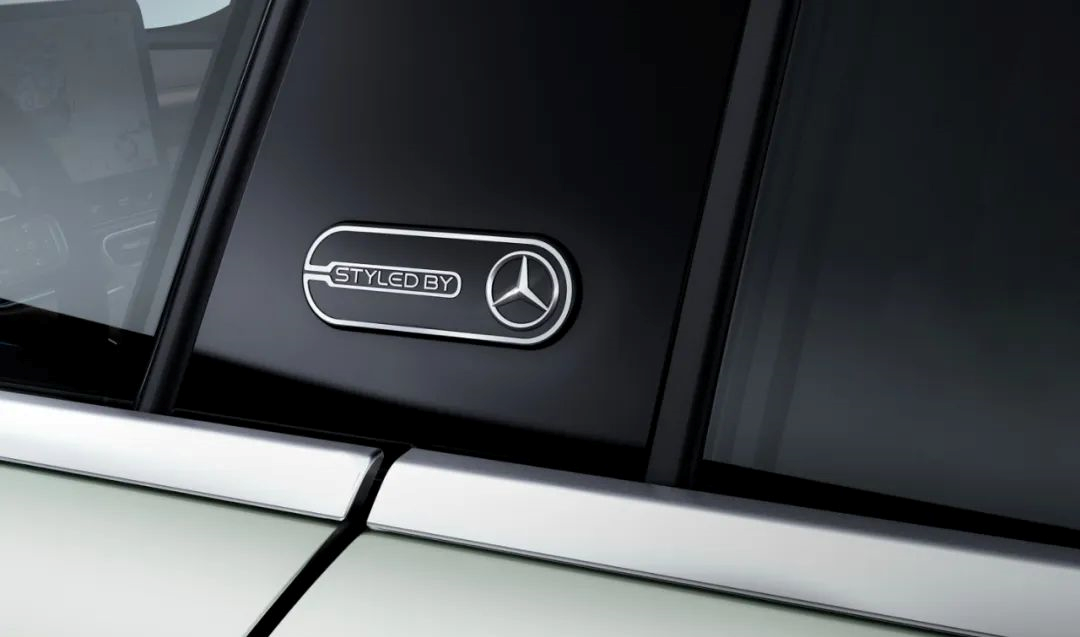
Therefore, with Mercedes-Benz as a guarantee and a starting price of 190,000 yuan, coupled with its positioning for young people, this car may stand out among the cars in this class.
After all, how many young people can resist a Mercedes-Benz at 190,000 yuan? (hand dog head)
—end—
This article is a translation by ChatGPT of a Chinese report from 42HOW. If you have any questions about it, please email bd@42how.com.
